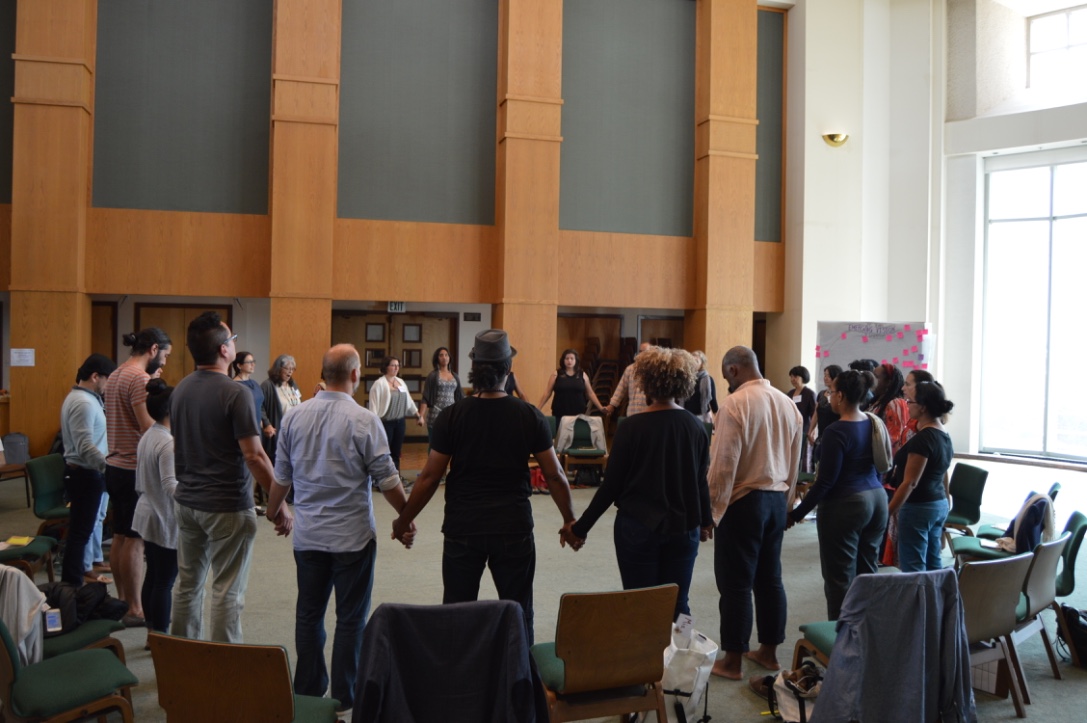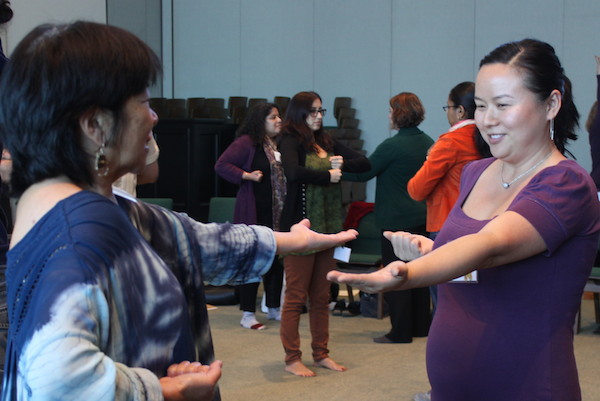MSC’s Transition Labs Offer a New Perspective on Transformative Movement Building by Julie Quiroz

Originally published on April 16, 2015.
“Reality is not destiny,” wrote Eduardo Galeano, the extraordinary Uruguayan writer who inspired social justice activists around the globe with his unflinching commitment to truth. Galeano, who lived through imprisonment and the threat of death squads and who died this past week, faced a violent and uncertain world with political imagination and joy.
I believe Galeano’s spirit was alive and well in the Movement Strategy Center Transitions Lab a few weeks ago.
“How do we transition from a world of domination and extraction to a world of resilience and regeneration” is the question guiding MSC’s work and strategy and the one that we embraced in the lab.
I use the word “embraced” because it captures the holistic approach that the lab sought to nurture and that is emerging as a powerful force in the irrepressible communities of care within OUR Walmart, the courageous community building of Black Lives Matter, the bold cultural transformation work of Mobilize the Immigrant Vote, the paradigm-smashing leadership development of Brown Boi Project, the nurturing of Beloved Community through Move to End Violence, and so much more.

Coming from diverse movement sectors such as economic justice, ecological justice, education justice, gender justice, more than thirty amazing leaders came together in the Transitions Lab to try on the individual and collective qualities we need for the truly profound global transitions that lie ahead. We also began to explore what navigation looks like when an unknown future reveals the dangers of siloed work and the limits of analysis and planning and process.
The three-day lab offered spacious time for movement leaders to:
- Connect and reconnect with other movement leaders who see personal and collective transformation as key to deep societal and cultural transition.
- Deepen shared understanding of opportunities and challenges of our present movement moment — and the “big leaps” that each of us can define and take in our work.
- Explore the qualities and capacities that we and our movements need to embody in order to prepare for, build, and take leadership in this time of transition.
- Experience how our physical stance shapes our mental, emotional, and strategic stance.

Reflections from the participants offer a glimpse of the lab experience:
“The lab offered spaciousness, purposeful space, and compelling questions.” – Rosa González, Facilitating Power
“I appreciated the inter-sectoral discussions about transformative transitions.” – Jacqueline Patterson, NAACP Environmental and Climate Justice Program
“The lab was invaluable for me, being in physical practice and exploring totally new ways of being and strategizing.” – Tomás Garduño, ALIGN New York
In the Transitions Initiative lab we were presented with the reality of our movements — the habits that limit our effectiveness and the magnitude of the challenges we face — but we were not constrained by that reality.
Instead, the lab nurtured a vision of exponential and irreversible transformation and wholeness, a new “destiny” that we ourselves can embody and bring forth.
Julie Quiroz (she/her) leads New Moon Collaborations, nurturing leaps in culture that transform systems and structures for generations to come.

